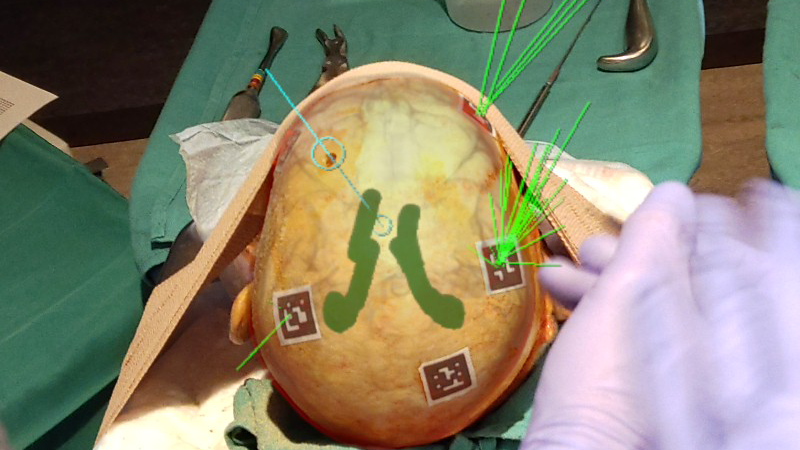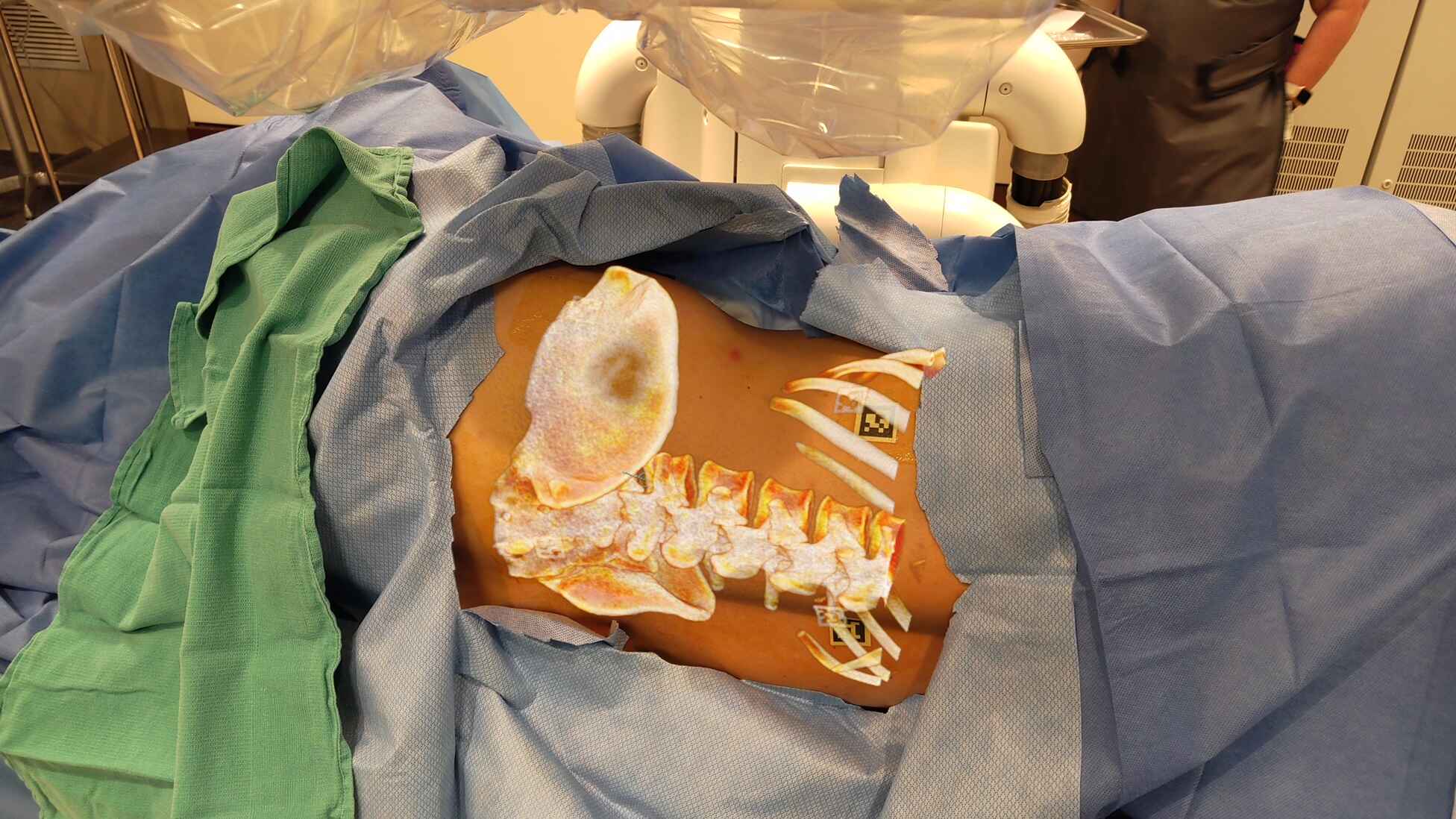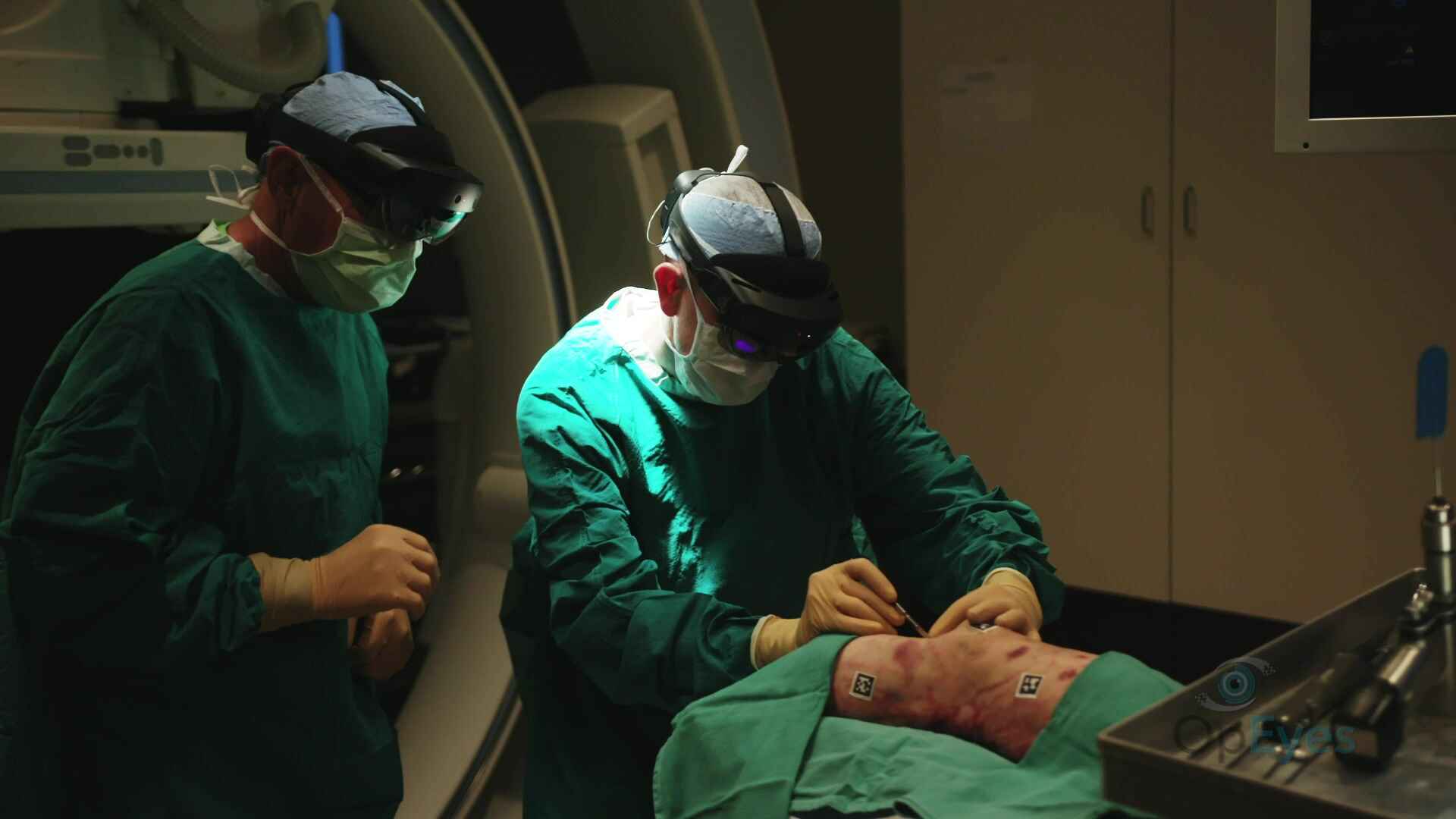
Increase accuracy with Novarad’s Augmented Reality Surgical Navigation Solutions.
Pioneering Surgical Navigation with Augmented Reality.
Since 2018, Novarad has delivered augmented reality (AR) solutions for surgical navigation to physicians globally. Beginning with OpenSight and evolving into VisAR, our journey has been driven by one core vision: empowering doctors to simultaneously see both the patient and inside the patient, ultimately enhancing surgical outcomes. Our progress is marked by milestones, from OpenSight's 510(k) clearance in 2018 for pre-operative surgical planning to the 2022 clearance of VisAR. Today, Novarad's AR surgery solutions have broadened their impact, advancing into fields like Neurosurgery, Orthopedic Surgery, and Minimally Invasive Surgery for Spine. We are determined to transform the landscape of surgical precision and patient care.
Click here to see VisAR in action and see how far Novarad’s vision for augmented reality in surgery has evolved.
Focus on your patient, not a monitor.
OpenSight® from Novarad® is an FDA-cleared augmented reality surgical navigation system that increases surgical accuracy and confidence. Like a surgical GPS, OpenSight enables physicians to find and reach their target destination more quickly.
OpenSight renders 2D, 3D, and 4D digital images from any modality into a highly detailed hologram. Using patented virtual tool technology with an integrated targeting system, the hologram is overlaid directly and accurately onto a patient’s body. Overlay virtual annotations for incisions, define pathology and anatomy, and create virtual needle or instrument insertions.
Precision imaging for precision healthcare
Precision prevents errors, reduces operating room times, and improves the patient’s experience and outcome. Using optical code alignment, cameras, and sensors, OpenSight maps both the patient and the surrounding environment from above, to the side, behind, or even underneath the patient. OpenSight significantly improves a physician’s understanding of their patient and allows them to:
- Make more precise incisions. Visualize internal anatomy from cross-sectional imaging superimposed on a patient prior to surgery.
- Navigate with knowledge. Mark the appropriate entrance point or angle, trajectory, and location for endoscope or needle placement, extract a foreign body, or place a pedicle screw.
- Virtually annotate structures. Colorize target organs as well as outline or annotate pathology to create semitransparent holograms of targeted anatomy.
- Patient engagement. Patients and their loved ones can view the annotated holographic images to better understand their procedure and feel more confident in their physician.
- Teach with confidence. Multiple headsets can be shared among members of clinical teams, improving training and collaboration.
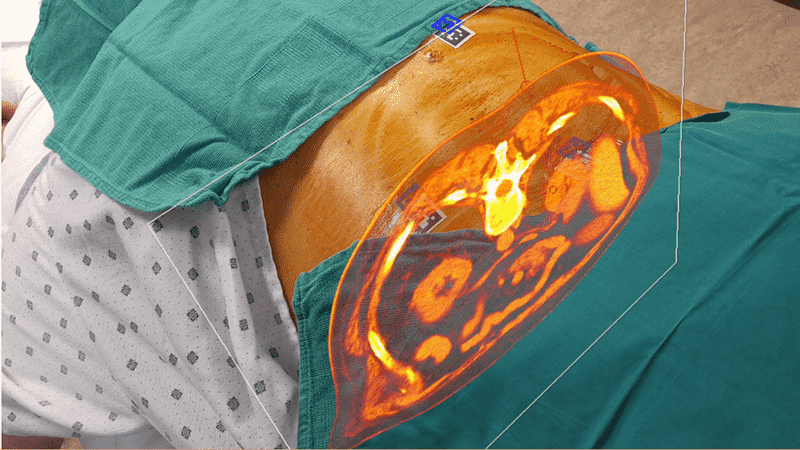
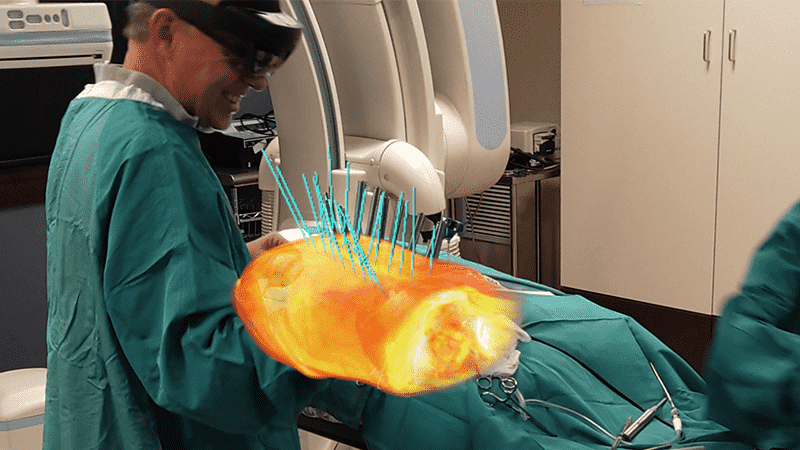
The HoloLens 2 system offers a larger field of vision, higher resolution, greater control and interaction with holograms, and more natural gestures.
The OpenSight system significantly improves my precision in the operating room. Specifically, it allows me to determine exactly where to place my incision thereby allowing me to keep the incision small — minimizing pain and improving overall cosmesis — and also shortens my operative time by allowing me to expose the surgical target more precisely and quickly. Dr. Babak Sarani, Director of Trauma and Acute Care Surgery, George Washington University Hospital
Ease of use
- Click a series
- Drop a tool
- Print a code
- Look at patient
- Begin procedure
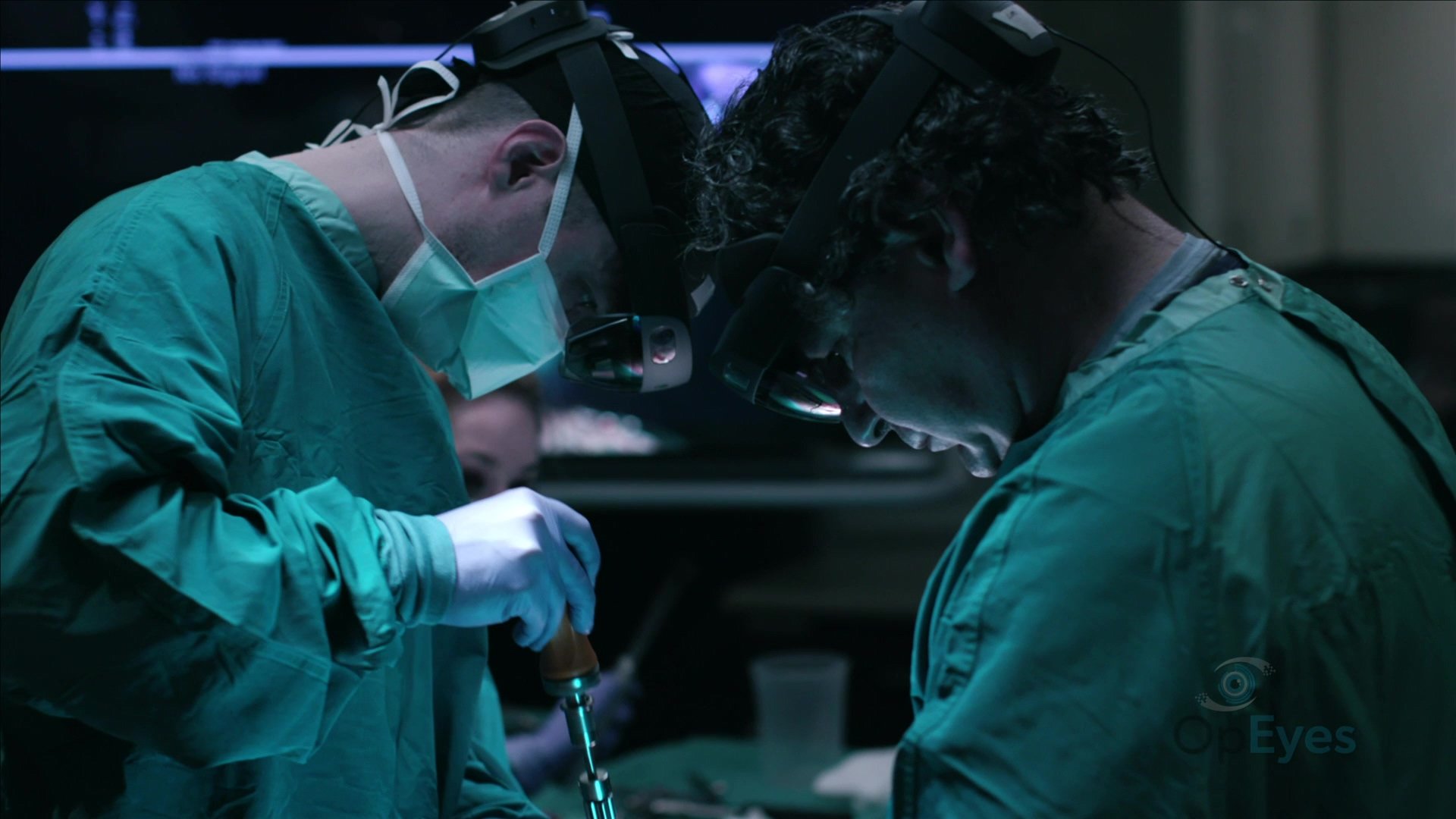
Optical system
- See-through holographic lenses
- Depth camera 1-MP TOF
- Two K 3:2 light engines
- 12 MP photo / HD video camera
- Automatic pupillary distance calibration
- Mixed reality capture: 8-MP stills
- Holographic resolution: 2.3M total light points
- Five-microphone array
- Holographic Density: >2.5k radiants (light points per radian)
- Ambient light sensor
- 52-degree field of view, with 47 pixels per degree
- Two eye-tracking IR cameras
- Four environment-understanding cameras
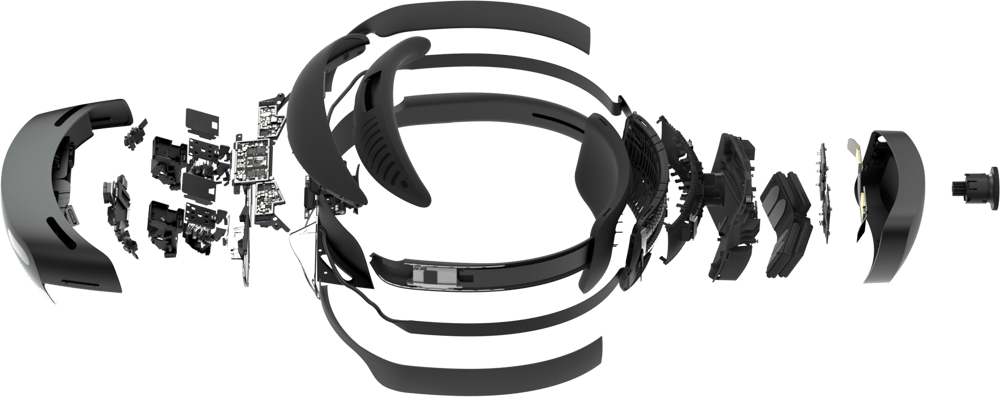
The OpenSight system allows a physician to conduct complex surgical procedures in the most minimally invasive manner. This is a real breakthrough. This is how surgery will be performed in the future. Dr. Gary Onik, Interventional Oncologist
OpenSight leads the market
- First AR surgical system using Microsoft HoloLens to receive FDA clearance
- Advanced 2D/3D/4D rendering without tethering
- AI-enhanced advanced 3D image segmentation
- Patented or patent-pending innovations
- Optical Tag Registration
- Surface Shell Registration
- Virtual tools for incision, markers, needles, trocars, and more
- Viewing images in a virtual spatial difference box
- Optical encoding of login, password, and image retrieval
- Virtual Annotations Patented optical tag registration system
- Anatomic labeling, pathologic markup
- Dynamic virtual targeting system for tracking lesions and trocar placement
- Enterprise Imaging, HIPAA logging, LDAP logins, data encryption, auto-routing

